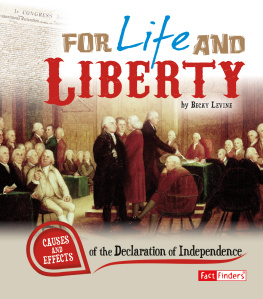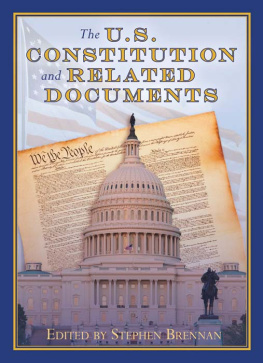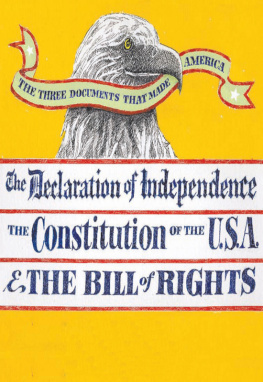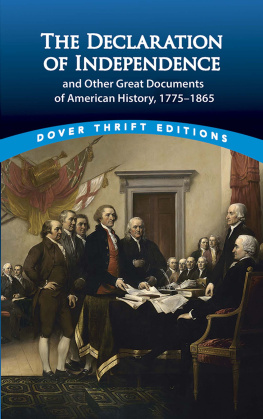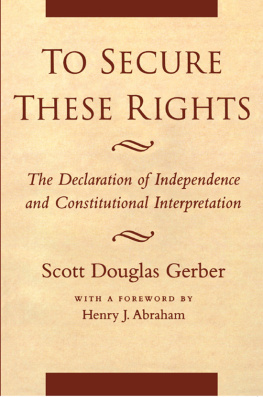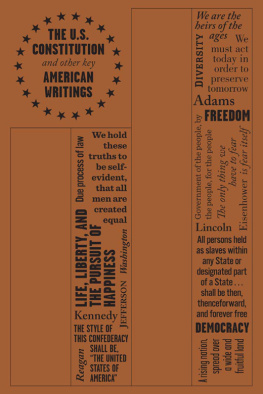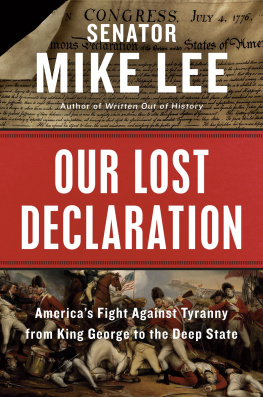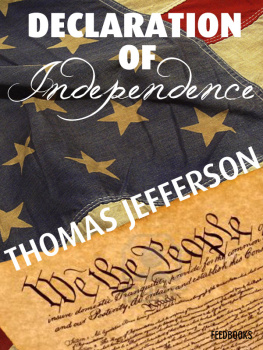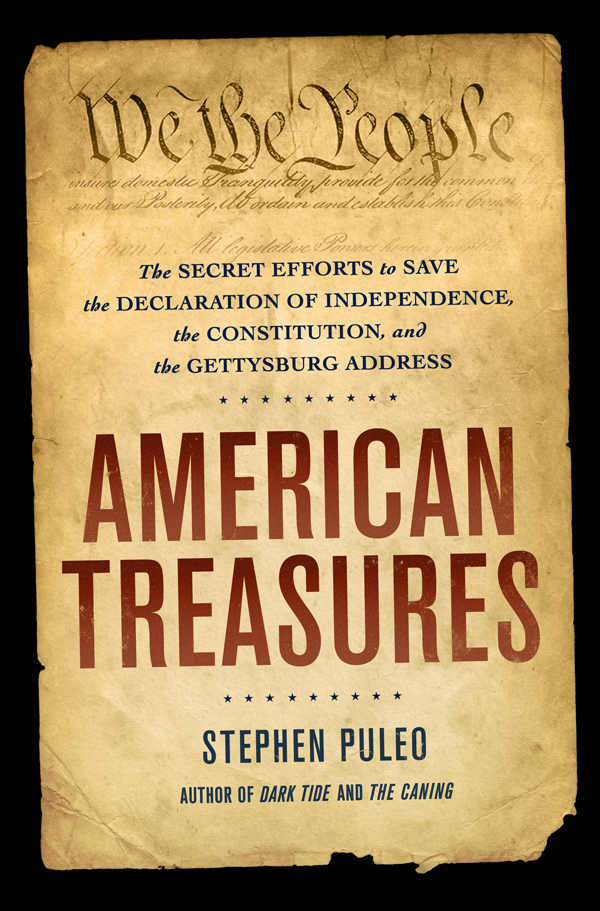Contents
Guide

The author and publisher have provided this e-book to you for your personal use only. You may not make this e-book publicly available in any way. Copyright infringement is against the law. If you believe the copy of this e-book you are reading infringes on the authors copyright, please notify the publisher at:
us.macmillanusa.com/piracy.
To Kate
The quiet of your lovepriceless
In 2014, my family sold the home in which my parents had raised my siblings and me. My dad had passed away several years earlier and, after managing the house by herself for a time, Mom had moved into a more carefree and far less lonely independent living arrangement. My brother, my sister, and I went through the long process that millions of children endure as they prepare the family homestead for salereliving memories, organizing and cleaning, deciding what stays and what goes.
As we reached the completion of our melancholy task, I wandered through the near-empty house and made my way downstairs to our basement playroom for one final check. There I noticedtaped high on the wall, where it had hung for nearly forty yearsthe facsimile of the Declaration of Independence that my parents had purchased during the American Bicentennial in 1976. It was the engrossed copy that most Americans are familiar withinked in calligraphy style with a fine hand, the bold and oversized In Congress, July 4, 1776 at the top, followed by The Unanimous Declaration of the thirteen united States of America. The word united was deliberately lowercase, merely a descriptive adjective at the time, not the first word in the name of a new country; the word States was far more important and capitalized for emphasis. Beneath the body text were the signatures of the founders, a whos who of American historyJohn Adams, Thomas Jefferson, Benjamin Franklin among them, with Continental Congress president John Hancocks sweeping signature dominating the bottom third of the parchment, oversized, centered, brazen, and unapologetic.
Below the signatures was a message from the sponsors that had printed this replica: The principles of the Declaration of Independence are as meaningful today as they were two hundred years ago. It is our hope that having this authentic copy will serve as a constant reminder of the foundations upon which the United States of America stands.
I had almost missed the worn, somewhat tattered copy hanging on the wall, but was thrilled when I spotted it. I was well into the research and writing of American Treasures , and viewed my late discovery as a fortunate sign. At the very least, it inspired methroughout the writing, the copy of the Declaration remained on my desk and I referred to it often.
It is easy to get lost in the document and all it representsthe text, the marvelous variation of signature styles, the care and flair employed by the engrosser. My parents and millions of Americans everywhere had always recognized the Declarations value, perhaps without knowing all the reasons why.
* * *
AMERICA HAS NO CROWN jewels, a perceptive editor said to me at the outset of my work on this book, but if she did, it would be these documents. Readers are going to be thrilled to hear about their journey over the last couple of hundred yearswhat people went through to create them, protect them, and preserve them.
He had offered a succinct synopsis of American Treasures, a story that describes how the Declaration of Independence, the Constitution, the Gettysburg Address, and many other critical documents were created, how they have defined a nation and its people throughout our history, and, for the first time, how Americans have made decisions and taken risks to protect them and ensure their preservation for future generations.
The United States was founded, and has evolved and prospered, with these documents as its foundation. Ours is the worlds first republic that can be traced back to its original founding documentthe Declarationand the worlds first country that was founded on the principle, if not the full-fledged reality, that all men are created equal; and just as fundamental, that governments power is derived from the governed and not the other way around. Such principles were uniquely American in 1776, and have guided our culture, politics, and policies for 240 years.
As so many other nations and peoples have struggled and often failed to advance under monarchies, theocracies, caste systems, oligarchies, anarchies, and dictatorships, Americas prosperous and inclusive democracyits small r republicanismremains based on and defined by its founding documents.
* * *
THE GENESIS OF American Treasures came when I read a small item about the Library of Congresss World War II decision to secretly relocate the Declaration of Independence, the Constitution, the Gettysburg Address, and other important documents to an undisclosed and heavily fortified location for safekeeping in the aftermath of the attack on Pearl Harbor. The Library of Congress also transferred 5,000 additional boxes of critical documents to inland university repositories, away from the path of potential enemy bombers; among them were the papers of George Washington and other presidents, the text of Samuel Morses first telegraph message, and James Madisons detailed account of the 1787 Constitutional Convention. I had never heard of this massive and risky relocation effort and was anxious to learn more. Because the National Archives and Records Administration (NARA) now holds and displays the Declaration, the Constitution, and the Bill of Rightscollectively called the Charters of FreedomI met with David Ferriero, Archivist of the United States, and Jessie Kratz, historian for the National Archives, to outline my idea. Their encouragement, enthusiasm, and ongoing cooperation inspired me and convinced me that this was a story worth pursuing.
It quickly became apparent, however, that the saga entailed more than the Library of Congress relocation activities in the 1940s. To fully understand what was at stake when the country undertook the Herculean task of protecting those parchments from potential enemy attack, I had to go back to their creation; this would help me tell the story of the full depth of their meaning and importance, as well as the motivations and aspirations of the people who created them. The struggle to save our priceless documents included not only their physical protection but the preservation of the ideas and ideals upon which they were basedduring their creation and in the years since.
What follows will tell the story of the journey of these documentsboth literal and figurativeover the last two centuries. Its a saga that covers the sweep of American historyfrom the spring of 1776 when the Continental Congress debated whether a group of colonies should declare their independence from the mother country with whom they were at war, all the way to the present day, in which highly sophisticated preservation techniques are employed to protect and preserve the documents.
Along the way, Americans in every era took great risks and great care first to produce, and then to protect and preserve, their cherished documents. Virtually every major American historical figure and event somehow touches at least one of the documents in some wayamong them the adoption of the Declaration of Independence in Philadelphia in 1776 and then the Constitutional Convention in the same city in 1787; the dramatic rescue of the Declaration of Independence and the Constitution just ahead of the British burning of Washington, D.C., in 1814; the deaths of both John Adams and Thomas Jefferson on July 4, 1826, the fiftieth anniversary of the adoption of the Declaration they helped draft, an against-all-odds moment that forevermore lent a touch of divine inspiration to Americas birthday; Lincolns majestic prose at Gettysburg that redefined the nations dedication to freedom by including people of all races; and the palpable fear of attack on or sabotage of the United States after Pearl Harbor that prompted the stealthy relocation of irreplaceable documents to safe havens.


